Growing up on the Elbe in the state of Saxony in Germany is one of the reasons why the city has a special place in my heart. Entertaining yet informative tours around the city created long-lasting memories and a love for my hometown. The Dresdeners are proud of their incredible city that never feels too busy or crowded. If you have a trip to Germany planned, do your best to pay Dresden a visit. These five things to do in Dresden prove the city totally worth your attention!
Magnificent castles stand side by side with contemporary buildings, Baroque and Rococo style palaces, while rich history makes Dresden, and it’s surrounding a jewel that attracts millions of visitors. The city is a popular stopover for travelers on their way from Berlin to Prague (or vice versa), but it has enough potential to be considered as a destination in its own right! While some people find it to be a bit like a living museum, that’s exactly what I like. I always try to imagine what the old buildings would have felt like in their old days. In Dresden, however, one actually gets a taste of how the city might have looked like. With a bit of a modern touch. This list of the best five things to do in Dresden will help you navigate the Old Town and tell you a bit more about the top attractions in Dresden.
Visit fabulous museums, art galleries, churches, great cafés, and restaurants, take a cruise along the Elbe, or go clubbing in Dresden’s trendy Hechtviertel district that offers dozens of street and backyard concerts, street raves, food stands, flea market, art, and interactive performances.
1. Frauenkirche
The Frauenkirche and its architecture demand your attention while in Dresden, especially thanks to the unique dome. It is actually considered one of the largest domes in Europe! The spectacular Protestant church was completed in 1743, following designs by the architect George Bähr who didn’t live to see it finished. Frauenkirche was totally destroyed in 1945. At first, ruins were left as a reminder, but the rubble was eventually catalogued and stored for use in its reconstruction in the 1980s.
After the reunification of Germany, the church was reconstructed at reopened in 2005. Some of the original stones were restored and incorporated into the new incarnation. They can be seen today – some of the old stones are much darker than the new ones. The new gilded cross and orb atop the dome were provided by Great Britain as a gesture of reconciliation, while the damaged former cross can be found to the right of the church’s new altar.
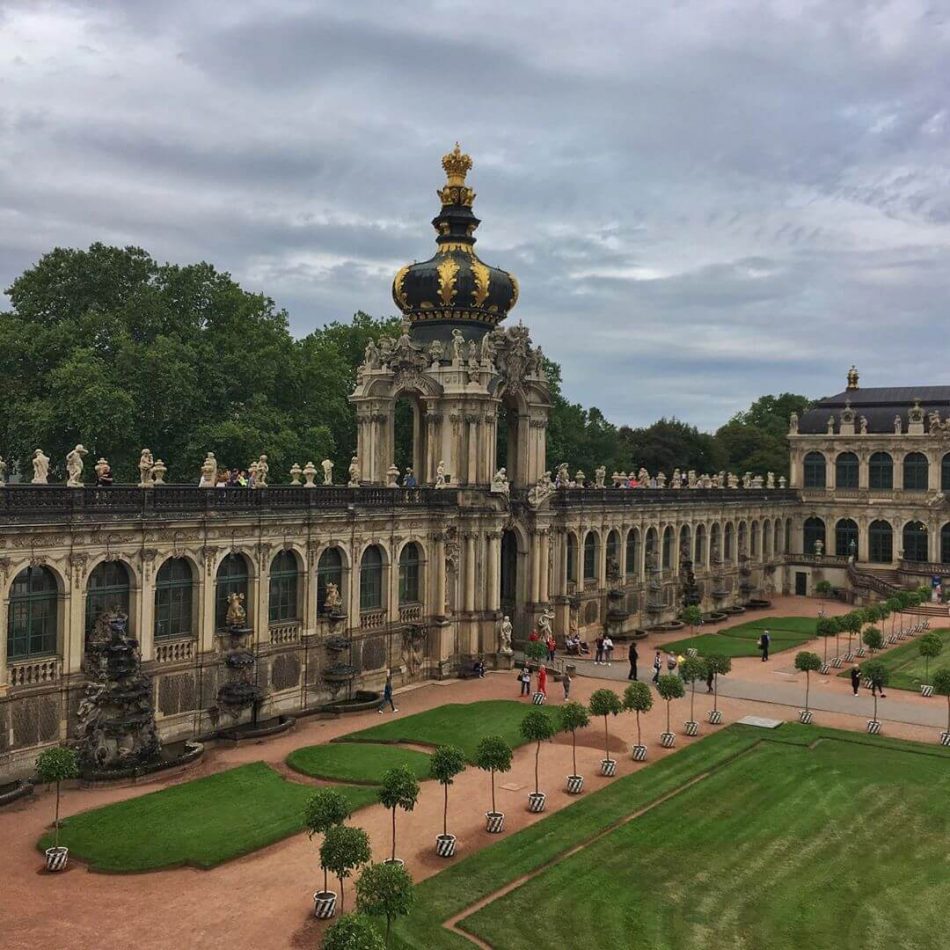
2. Zwinger Palace
The Zwinger is a spectacular early 18th-century sandstone palace built in Baroque style with huge gardens and fountains. Located in the center of the city beside the Elbe, the Zwinger is one of the finest examples of Baroque architecture in Germany. It’s worth walking around the outside and along the upper walkway overlooking the grounds just to appreciate its architecture.
The Zwinger itself is home to some of the city’s most cultural galleries including the majestic 32-bayed Long Gallery, the Wallpavillon and the Nymphenbad (Bath of the Nymphs), with its graceful fountains and mythological figures. Here visitors will also find Dresdener Porzellansammlung (Dresden Porcelain Collection), scientific instruments in the Royal Cabinet of Mathematical and Physical Instruments, and the Old Masters Picture Gallery. The latter features paintings from the 15th to the 18th centuries, among them Italian Renaissance and Baroque masterpieces by Raphael, Titian, Correggio, and Tintoretto. The collection also includes works by Rembrandt, Rubens, Van Dyck, and Vermeer.
3. Semperoper
Arguably the most famous opera house in Germany, Dresden’s Semper Opera House is one of the country’s most respected performing arts venues. It was named after its architect Gottfried Semper, and today the concert hall of the Saxon State Orchestra is home to the Semperoper Ballett. I actually can’t imagine visiting Dresden without seeing neo-renaissance opera building. It is one of the best Dresden landmarks!
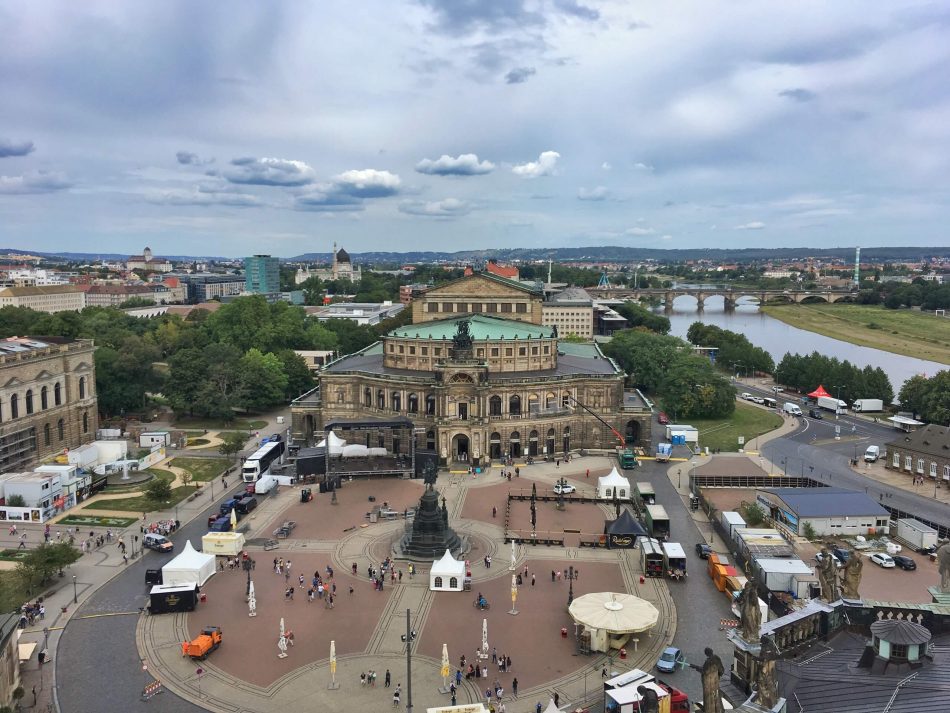
Unless you are ready to dress up and attend one of the evening performances, you can transport back into the past through guided tour. It costs 11 Euro and it is pretty much the only chance to see the lavishly decorated interior during the day! So why not take advantage of the opportunity?
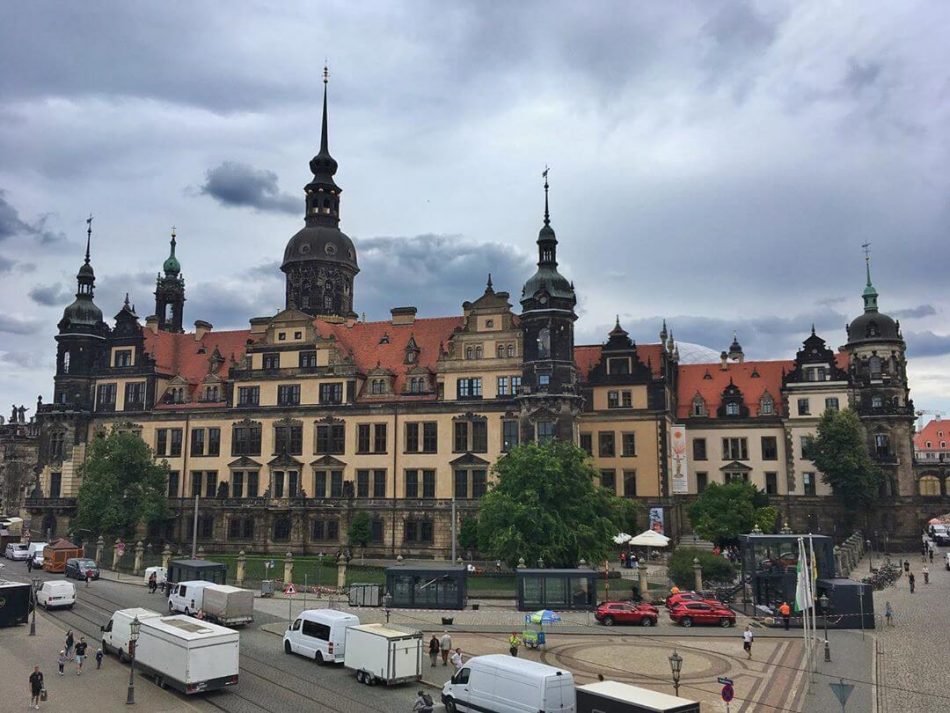
4. Dresdner Residenzschloss
This Renaissance palace is the residence for the Electors and then the Kings of Saxony from the 16th to the 19th century. Located in the historic heart of Dresden, Residenzschloss is now an ensemble of museums for the various state collections. The most exquisite of all the Green Vaults, two exhibition spaces containing two of the most impressive and lavish works of art. But there is also the Dresden Armoury, an astounding assortment of ceremonial armour, weapons and regalia, and the Turkish Chamber, one of the most significant collections of Ottoman art outside Turkey.
Also in the palace is the Kupferstich-Kabinett, the 500,000-strong collection of engravings, drawings, and photographs, by artists like Picasso, Michelangelo, Toulouse-Lautrec, Jan van Eyck, Rubens, and Rembrandt. And not to forget the Münzkabinett explaining the various aspects of money and featuring the history of coins from antiquity to the present, from the Greek drachma to the euro. As the museum tells visitors, money was often much more than a mean of payment. They served as a means of communication, a medium of dissemination for important political messages.
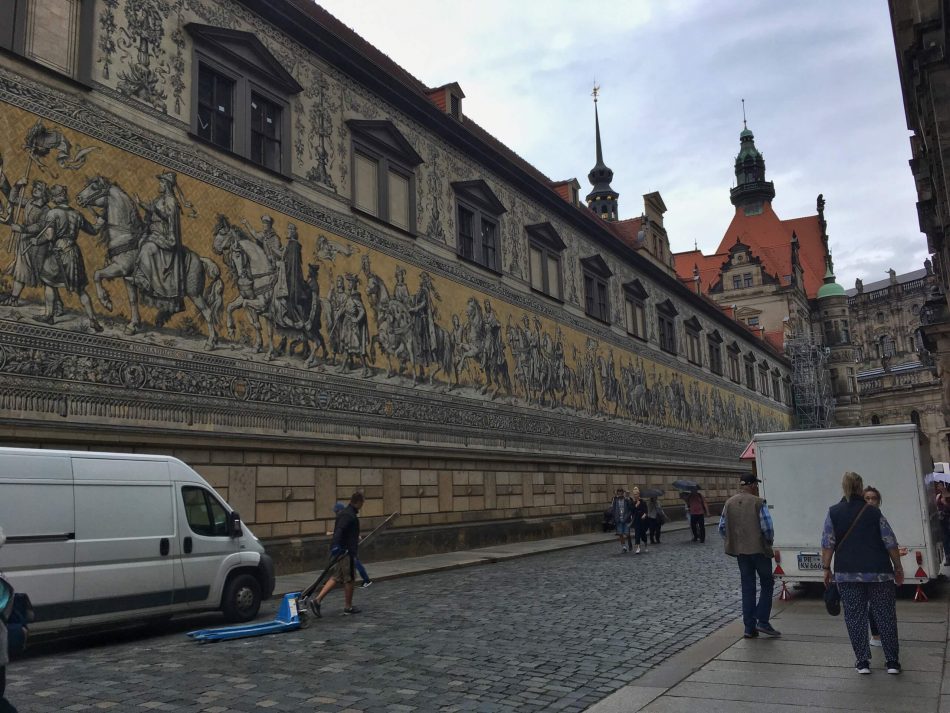
5. Fürstenzug Mural
On the east side of the Dresden Castle, come around to the facade of the Stallhof on Schlossplatz Square where there’s a porcelain painting 102 metres in length. This impressive mural (Fürstenzug) was initially painted in the first half of the 1870s, and this image was later replaced by porcelain tiles in the 1900s to protect it from the elements. You couldn’t ask for a better history lesson, as the procession of princes records all 35 margraves, princes, and kings of the House of Wettin from the 12th century through the 19th century. The mural also represents 59 most prominent German scientists, artisans, craftsmen, and farmers.


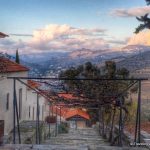
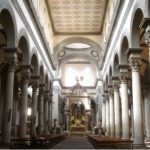

Great and unique. I recommend if you want to know more about the history and restoration of Dresden!
Thank you.